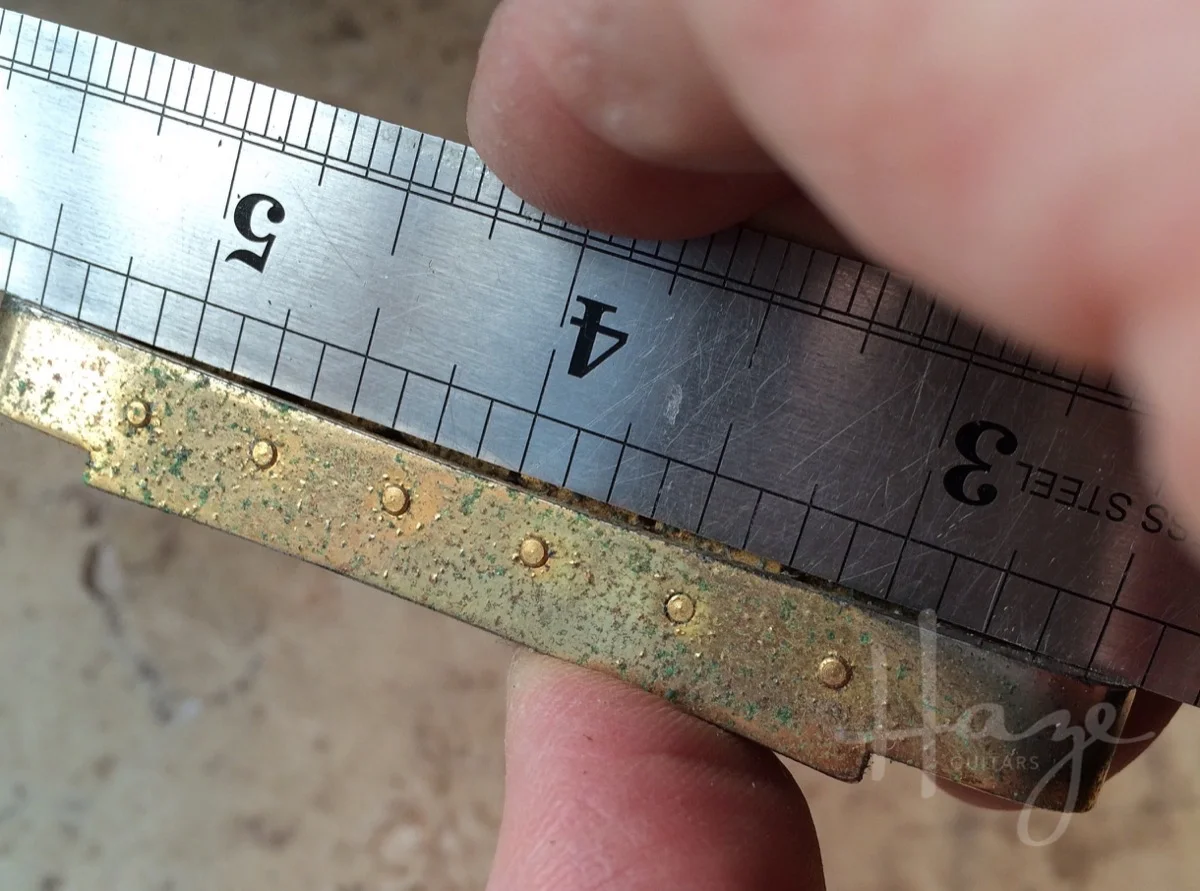Guitar Sustainnnnnnn…
I want to talk a little about sustain. That quality that guitarists frequently extol. When we think about it, it’s an interesting characteristic to value but, before we get there, let’s consider setup change that is, otherwise very useful but could have a (potential) impact on sustain.
Ages ago, I wrote something on Gibson tune-o-matic bridge collapse. To recap quickly, these bridges can buckle as the string tension exerts itself on them. The middle of the bridge sinks down and the bridge takes on a concave shape. This causes odd action problems and it’s generally not great. Check out the link above for more info.
At the time, I recommended raising the stop tailpiece (where the strings anchor) as a way to help prevent this bridge collapse. Raising the tailpiece makes for a less steep string break-angle over the bridge and doesn’t impart so much downward pressure.
I also mentioned that some players don’t like to raise the tailpiece as they feel it negatively impacts the instrument’s sustain. For those players, I recommended stringing ‘over’ the tailpiece (inserting the string from the front and wrapping over the top). This would allow the tailpiece to remain tightly screwed to the body while the string break-angle is decreased.
I had a great question on this recently and felt it was a useful way into this discussion.
The question, summarised, was, “Doesn’t the string break-angle play a part in the instrument’s sustain?”
The answer is, “Yes, almost certainly.”
Actually, I suspect that the string break-angle and screwing the tailpiece down tightly both play a part in an instrument’s sustain. The ‘enhanced’ coupling provided by a tightly screwed tailpiece almost certainly contributes a little to sustain. The enhanced coupling provided by a steep string angle almost certainly contributes too. Poor coupling anywhere in a string path can kill off some of the string energy.
So, am I recommending something that's going to impact sustain?
Well, let’s talk about sustain.
First, we need to build a test rig that can hold a guitar and consistently pick a string without varying intensity or attack. We need to add a method to accurately measure sound pressure levels and time how long an instrument’s string vibration remains in the audible range. A number of before and after samples will give an indication of how much the sustain has been impacted by raising the tailpiece. We should consider testing a number of instruments to see if these results are consistent across them.
I haven’t done that. It’s far too difficult.
I’d certainly be interested in the results from a test like that, though, because I don’t hear terribly significantly differences in common or garden use.
Of course, I’m not you. If you listen to your guitar and hear a reduction in sustain that makes you gasp, you might decide the increased break angle is worth it and that you’ll be happy to replace a collapsed tune-o-matic bridge occasionally. Totally fine. This is all part of the wonderful Guitar Compromise Waltz we have to perpetually perform because of these instruments we love.
Sustain, though, has always seemed like a slightly odd metric to place so much value on. Most of us don’t play music that requires a note or chord to sustain for twenty seconds yet we’re nuts for a guitar that can do that.
If for example, our tailpiece adjustment reduced our sustain by a hefty ten percent, dropping (for instance) from twenty seconds to eighteen, would that impact us in any meaningful way? Would that make an audible difference to the music we play or record?
If your answer is yes, great — no judgement. Make the call that’s right for you. We all dance the Compromise Waltz in our own way.
If I was guessing, though, I have a feeling that — for most of us — outright sustain probably isn’t the most important factor in our tone. And, if we do need to drone on, we’re likely turning to artificial means rather than relying on the guitar’s natural sustain.
Summing up all of this rambling:
- If you have scientifically controlled sustain experiment results, please let me know.
- If you hear a loss of sustain while raising your tailpiece — and you feel impacted by that — go right ahead and screw it back down.
- If you don’t hear a difference, or you don’t feel impacted, I reckon it makes more sense to raise it and would advise you to do that.
Care to waltz? 😉
This article written by Gerry Hayes and first published at hazeguitars.com











